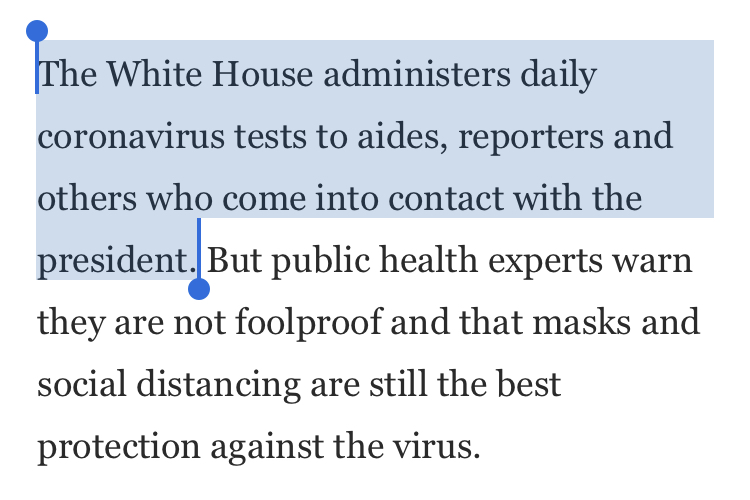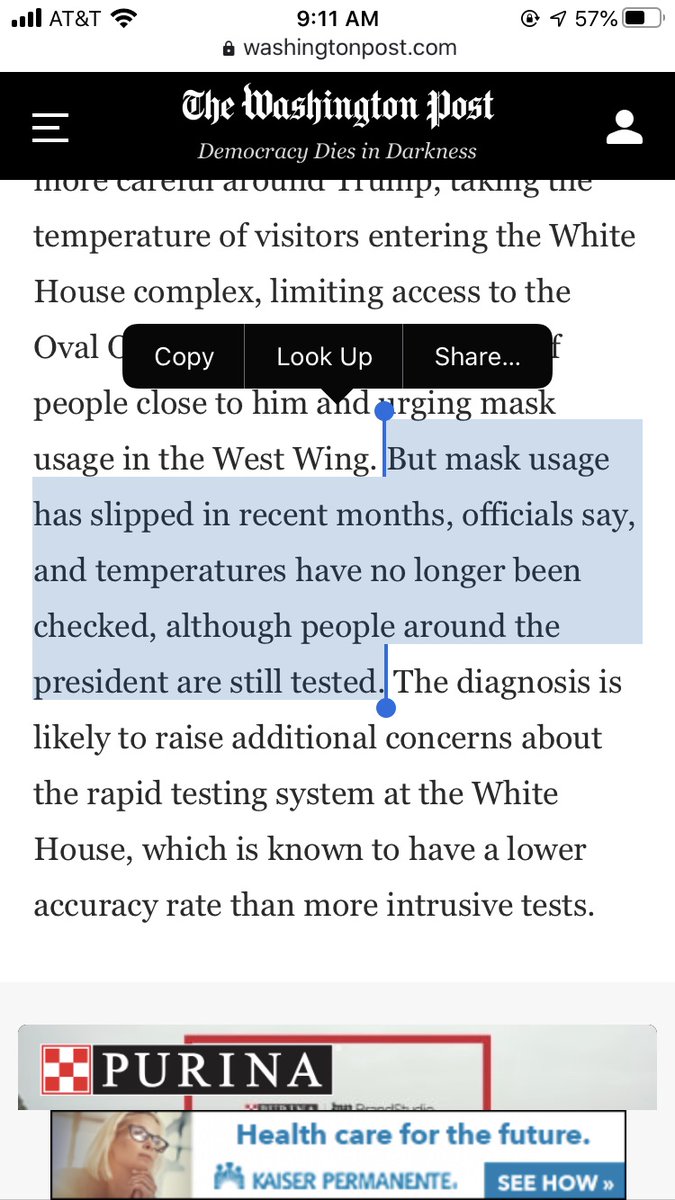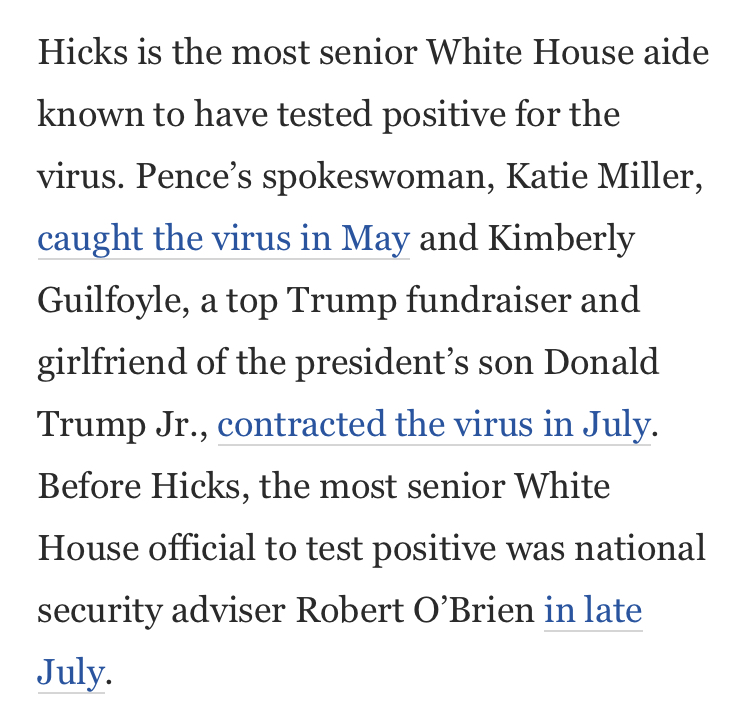After the President and First Lady tested positive for SARS-CoV-2, we might be tempted to conclude that frequent rapid testing isn& #39;t all it& #39;s cracked up to be. But that would be drawing the wrong conclusion. 1/8
Frequent rapid testing is not a silver bullet.
But in a White House with poor adherence to social distancing and mask wearing, daily #rapidtesting deserves most of the credit for keeping the President and First Lady safe from the virus until now. 2/8
But in a White House with poor adherence to social distancing and mask wearing, daily #rapidtesting deserves most of the credit for keeping the President and First Lady safe from the virus until now. 2/8
The White House began frequent rapid testing of those coming into contact with the President early in the #COVID19 pandemic. Even as it was slow to adopt social distancing and mask wearing measures. 3/8
In the past few months the White House has increasingly relied exclusively on frequent rapid testing for those who come into close contact with the President. 4/8
Several members of Trump& #39;s entourage have tested positive for SARS-CoV-2 in the past six months. But none of these cases led to a larger outbreak in the White House. Frequent testing means cases can be isolated before the virus spreads. 5/8
Even in the case of Hope Hicks, frequent testing surely limited the spread of the virus. Hicks tested negative on Wednesday morning and positive on Thursday morning. That means in all likelihood she spread the virus to others for one day at most. 6/8
Some had theorized in July that Trump was immune to the virus or that he& #39;d already had it. They attributed Trump& #39;s health to conspiracy theories because they underestimated the power of frequent rapid testing. 7/8 https://twitter.com/ZoeMcLaren/status/1281414003563155458?s=20">https://twitter.com/ZoeMcLare...
Frequent rapid testing is not fool proof. Neither are masks. Neither is social distancing.
But when we use all these tools at once, we have layers of protection that drive transmission to zero and help keep us safe from the virus. 8/8
But when we use all these tools at once, we have layers of protection that drive transmission to zero and help keep us safe from the virus. 8/8

 Read on Twitter
Read on Twitter




